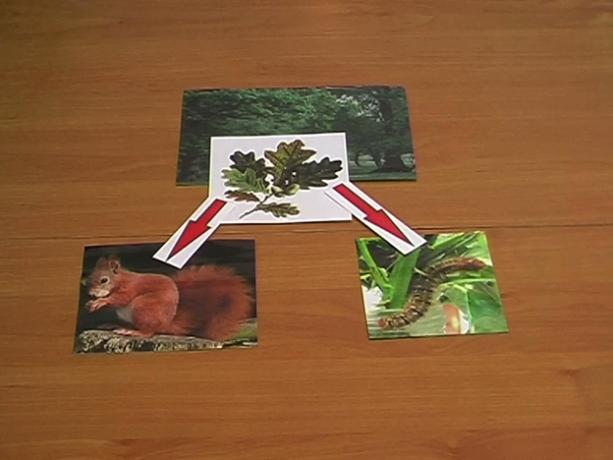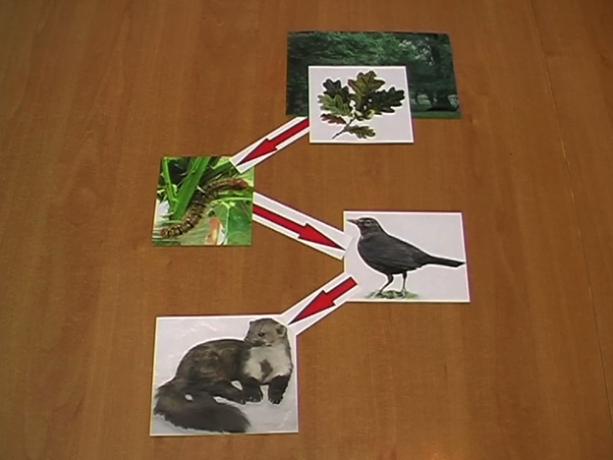VIDEO: Food chain in forest
Examples of how living beings in the forest live from one another

Use examples to show who depends on whom to illustrate the food chain in the forest:
- Start with the living being, which unfortunately many do not consider living being: with the tree. A plant is also a living being. The difference is that plants get their food from carbon dioxide in the air, from water from the soil and from sunlight. So a plant is the basis of the food chain. You are a producer.
- Now think about which animals the tree serves as food. Examples are animals such as caterpillars that feed on a tree. But also "higher" creatures, such as a squirrel that eats the fruit of the tree. These animals are consumers and since they only eat plants, they are also called first-time consumers.
- But now these animals are being eaten themselves. Examples are birds or lizards that eat caterpillars. The squirrel can also be eaten by a cat or a fox. These animals are then so-called secondary consumers.
- Now it can happen that there are also third or fourth consumers, because larger birds eat lizards, which would then be third-party consumers in this regard. The bird, in turn, can be eaten by a marten, so the marten would be a marten Fourth consumer and the marten in turn is eaten by a fox, which then becomes the fifth in the Chain would be.
- You can see from the examples that the position in the food chain in the forest is fluid in the higher links of the chain. A fox can be a third-party consumer if it eats a bird that feeds on caterpillars, but a Fourth consumer, if the bird itself has eaten a second consumer or even higher up be located.
- At the very end of the food chain there will definitely be insects again and then bacteria. Because each of the living beings mentioned is eaten by them after their death and completely broken down by the bacteria. The resulting substances benefit the trees again. But these still need additional carbon dioxide, water and sunlight in order to grow. So it works energy lost in the chain.
The food chain in the forest - this is what it looks like
The forest is a habitat for numerous plants and animals. These creatures go a ...

Where the energy stays in the food chain
Consider a food chain in the forest. The examples are tree, caterpillar, bird and marten.
- Life consumes energy and so the tree does not convert all of the energy it consumes into chemical energy. Some of it is used up by cellular respiration. The rest is in the form of leaves, twigs, branches, etc. saved.
- The caterpillar is now eating on the tree. Even if this were to completely eat the tree, the caterpillar would never be able to store the energy that it absorbs from the tree, because the caterpillar moves and breathes. Both consume energy.
- Now the bird comes into play. The bird can only store a small part of the energy it absorbs from the caterpillar. The bird moves and breathes. In addition, he has to maintain his body temperature. So it consumes some of the energy. Therefore, the marten gets very little of the energy that the tree originally absorbed.
- The energy that the marten absorbs is later used up by the bacteria when they decompose it after its death.

You can also use these examples to illustrate this. Assuming the marten needs 1,000 kcal to live, then it has to meet its needs by eating a bird that eats 2,000 kcal of caterpillars, for example who in turn had to eat 2,500 kcal on leaves, for the production of which the tree in turn provides 3,000 kcal had to.



